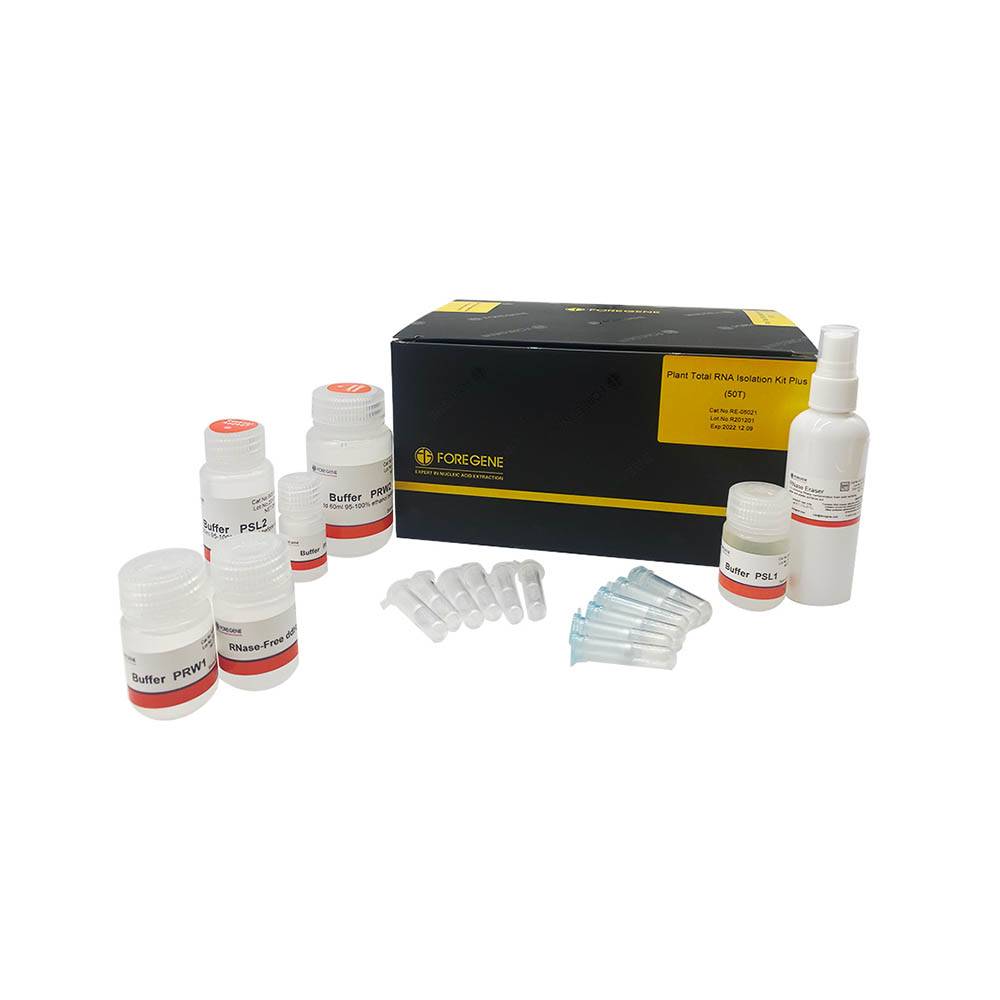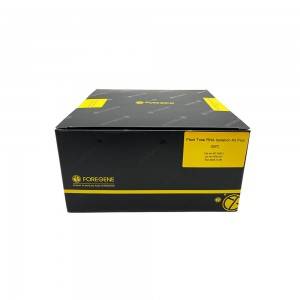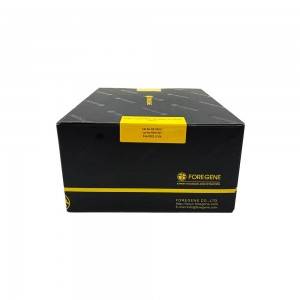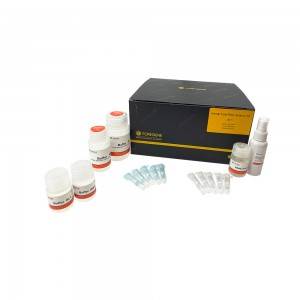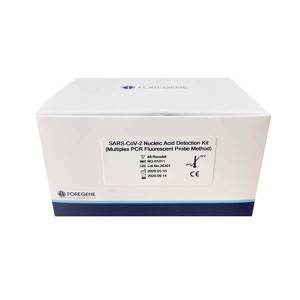New Delivery for Nucleic Acid Extraction Reagent (Serum/ Plasma and Puncture solution) , Rna Extraction Test Kits
We constantly believe that one’s character decides products’ high quality, the details decides products’ high-quality ,together with the REALISTIC,EFFICIENT AND INNOVATIVE crew spirit for New Delivery for Nucleic Acid Extraction Reagent (Serum/ Plasma and Puncture solution) , Rna Extraction Test Kits, With a wide range, top quality, acceptable charges and great assistance, we are going to be your finest business partner. We welcome new and previous prospects from all walks of lifetime to get in touch with us for upcoming small business interactions and accomplishing mutual achievement!
We constantly believe that one’s character decides products’ high quality, the details decides products’ high-quality ,together with the REALISTIC,EFFICIENT AND INNOVATIVE crew spirit for China Nucleic Acid Extraction Reagent and Magnetic Bead Method, Our products have enjoyed a great reputation for their good quality, competitive prices and prompt shipment in international market. Presently, we are sincerely looking forward to cooperating with more overseas customers based on mutual benefits.
Instruction Manuals:Plant Total RNA Isolation Kit Plus Instruction Manual
We constantly believe that one’s character decides products’ high quality, the details decides products’ high-quality ,together with the REALISTIC,EFFICIENT AND INNOVATIVE crew spirit for New Delivery for Nucleic Acid Extraction Reagent (Serum/ Plasma and Puncture solution) , Rna Extraction Test Kits, With a wide range, top quality, acceptable charges and great assistance, we are going to be your finest business partner. We welcome new and previous prospects from all walks of lifetime to get in touch with us for upcoming small business interactions and accomplishing mutual achievement!
New Delivery for China Nucleic Acid Extraction Reagent and Magnetic Bead Method, Our products have enjoyed a great reputation for their good quality, competitive prices and prompt shipment in international market. Presently, we are sincerely looking forward to cooperating with more overseas customers based on mutual benefits.
The column plugged
After the column plugged, the RNA yield is reduced or even impossible to purify the RNA, and the obtained RNA mass is low.
Common cause analysis:
1. Sample breaks are not thorough.
Sample breakage does not completely cause DNA-CLEANING COLUMN to be blocked, while affecting RNA yield and quality. We recommend rapid grinding operation in a sufficient liquid nitrogen when you broke the samples, Try to crush the sample cell wall, cell membrane and other tissue. For plant samples of polyol polysaccharides, we recommend that you use Plant Total RNA ISOLATION KIT PLUS.
2. When suction the separated sample supernatant with DNA-Cleaning Column, the possible cell fragmented precipitate may be inhaled.
The cell fragmented sediments taken will cause the RNA-ONLY Column which will be blocked when the RNA adsorption operation is performed (see the step 6). We recommend you carefullly when suction this supernatant to avoid cell debris being sucked.
3. Sample initial amount is too much.
Excessive sample usage will result in incomplete sample fragmentation or incomplete cell lysis by Buffer PSL1, resulting in blockage of the purification column during purification. Plant Total RNA Isolation Kit Each single purified operating sample is 50 mg. For plant samples of polyol polysaccharides, we recommend that you try Plant Total RNA ISOLATION KIT PLUS.
4. The temperature of the centrifuge is too low.
The entire RNA isolation and purification process is carried out at room temperature (20-25°C), except that the sample tissue is broken by liquid nitrogen.The temperature of some cryogenic centrifuges is lower than 20℃, which may cause blockage of DNA-Cleaning Column and/or RNA-Only Column. If this happens, set the centrifuge temperature to 20-25℃, and make sure the lysis mixture and/or the ethanol-added supernatant was preheated to 37°C.
No RNA extracted or RNA yield is low
There are usually many factors that affect the recovery efficiency, such as: sample RNA content, operation method, the elution volume, etc.
Analysis of common causes as below:
1.An ice bath or low temperature (4°C) centrifugation was performed during the operation.
Suggestion: Operate at room temperature (15-25°C) in the whole process, do not do ice bath and low temperature centrifugation.
2.The RNA has been degraded due to improper preservation of the sample or long-term preservation of the sample.
Recommendation: Freshly collected samples should be quickly frozen in liquid nitrogen, and then stored at -80°C for a long time,avoid repeated freezing and thawing of samples; or immediately soak the samples in RNA stabilizer RNAlater solution (animal samples).
3.Insufficient sample fragmentation and lysis lead to blockage of the purification column.
Suggestion: When grinding the tissue, please ensure that the tissue is sufficiently ground, and quickly transfer it to the pre-prepared Buffer PSL1 (confirm that the correct proportion of β-ME has been added, see step 1 of the procedure).
4.The eluent was added incorrectly.
Suggestion: Make sure that RNase-Free ddH2O is dripped into the middle of the purification column membrane.
5.The correct volume of absolute ethanol was not added to Buffer PSL2 or Buffer PRW2.
Suggestion: Please follow the instructions, add the correct volume of absolute ethanol to Buffer PSL2 and Buffer PRW2 and mix well before the kit is used.
6.The amount of tissue sample is inappropriate.
Suggestion: Use 50 mg of tissue per 500 μl of Buffer PSL1. Using too much tissue will reduce the amount of RNA extracted and the purity of the resulting RNA will also be reduced. We strongly recommend that the initial sample dosage should not exceed 50 mg per RNA extraction operation.
7.Inappropriate elution volume or incomplete elution.
Suggestion: The eluent volume of the purification column is 50-200 μl; if the elution effect is not satisfactory, it is recommended to extend the time at room temperature after adding preheated RNase-Free ddH2O, such as 5-10min.
8.The purification column has ethanol residue after washing with BufferPRW2.
Suggestion: If the empty tube is centrifuged for 1 min and there is still ethanol remaining after washing in Buffer PRW2, you can increase the time of the empty tube centrifugation to 2 min, or place the purification column at room temperature for 5 min to fully remove the residual ethanol.
9.The kit was used incorrectly.
Suggestion: For plant samples of polyphenolic polysaccharides, using common kits such as Plant Total RNA Isolation Kit may not be able to obtain ideal RNA samples. We recommend you to use Plant Total RNA IsolationKit Plus, which is specially designed for polyphenolic polysaccharide plant samples. A kit specially developed for extracting RNA from polyphenol and polysaccharide plant samples.
OD260/OD280 value is low
RNA elution with ddH2O and used for spectrophotometer readings results in low OD260/OD280 values. We recommend using 10 mM Tris-HCl, pH 7.5 (rather than RNase-Free ddH2O to elute RNA) to obtain relatively correct OD260/OD280 values, see “RNA Concentration and Purification Assays” on page 19.
The purified RNA is degraded
The quality of purified RNA is related to factors such as sample preservation, RNase contamination, and manipulation.
Analysis of common causes:
1.Tissue samples were not stored in time after collection.
Recommendation: If the tissue samples are not used in time after collection, please store them in liquid nitrogen at low temperature immediately or transfer them to -80°C for long-term storage after quick freezing in liquid nitrogen, or immediately immerse the samples in RNA stabilizer RNAlater solution (animal samples ). For RNA extraction, try to use freshly collected tissue samples.
2.Repeated freezing and thawing of tissue samples.
Suggestion: When storing tissue samples, it is best to cut them into small pieces for preservation, and take out a part of them when using them to avoid the degradation of RNA caused by repeated freezing and thawing of the samples.
3.RNase is introduced in the operation room or not worn disposable gloves, masks, etc.
Suggestion: RNA extraction experiments are best performed in separate RNA operations, and the laboratory table should be cleaned before the experiment, and disposable gloves and masks should be worn during the experiment to avoid RNA degradation caused by the introduction of RNase to the greatest extent.
4.The reagent is contaminated by RNase during use.
Suggestion: Replace with a new series of plant total RNA extraction kits for related experiments.
5.The centrifuge tubes and pipette tips used for RNA manipulation are contaminated with RNase.
Suggestion: Make sure that the centrifuge tubes, pipette tips, pipettes, etc. used in RNA extraction are all RNase-Free.
Instruction Manuals:
Plant Total RNA Isolation Kit Plus Instruction Manual





